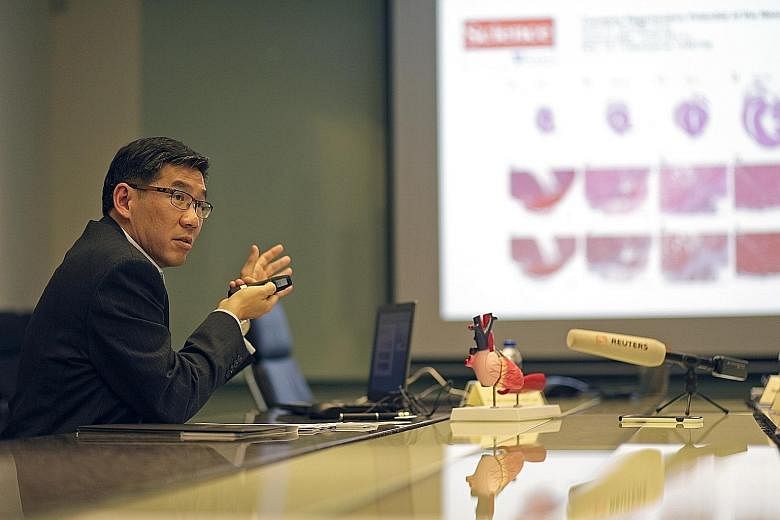Scientists here have discovered a chemical compound in mice that prevents heart muscle cells from repairing themselves. If it can be blocked, heart muscle cells can regenerate, like skin cells, and the heart may be able to heal itself.
With cardiovascular disease accounting for almost 20 per cent of all deaths here, researchers from the Agency for Science, Technology and Research's Genome Institute of Singapore (GIS) and the National University Health System (NUHS) are hopeful this holds the key to combating heart disease, which claims about 16 lives a day.
The study was led by Associate Professor Roger Foo, principal investigator at GIS and NUHS' Cardiovascular Research Institute and senior consultant at the National University Heart Centre, Singapore.
He said: "There has always been a suspicion that the heart holds the key to its own healing. If it can be motivated to heal like the skin, consequences of a heart attack would be banished forever."
The study was published on Aug 9 in the Nature Communications journal.
Heart muscle cells are damaged during a heart attack when oxygen supply to the organ is cut. These damaged cells can lead to permanent scar tissues, which is why heart attacks and heart failure tend to be severe and incurable.
Studying mice for three years, the researchers found that heart cells are blocked from regenerating and self-healing by a ribonucleic acid (RNA) molecule in the heart.
This is the first research project in Singapore that studied heart regeneration, and the first in the world that tackled the role RNA plays in heart failure.
They named the molecule Singheart, after the researchers from Singapore. The molecule has the ability to control and regulate other genes. It acts as a brake that prevents heart cells from dividing, regenerating and thus self-healing.
The researchers believe that patients with heart failure will have more Singheart in their heart cells than patients without heart failure.
With mice, the research found that the quantity of Singheart increases as mice get older.
The next step - similar experiments with human heart cells and testing of agents that could target this molecule to block its function.
Research to confirm the suspicion that human heart cells contain an equivalent of Singheart is ongoing, said Prof Foo.
Dr Calvin Chin, a consultant at the National Heart Centre Singapore's department of cardiology, said: "The study... has deepened our understanding of how some proteins interact in cell regeneration. If the next step is proven successful, it may hold important clinical implications in targeted therapies for heart failure."

